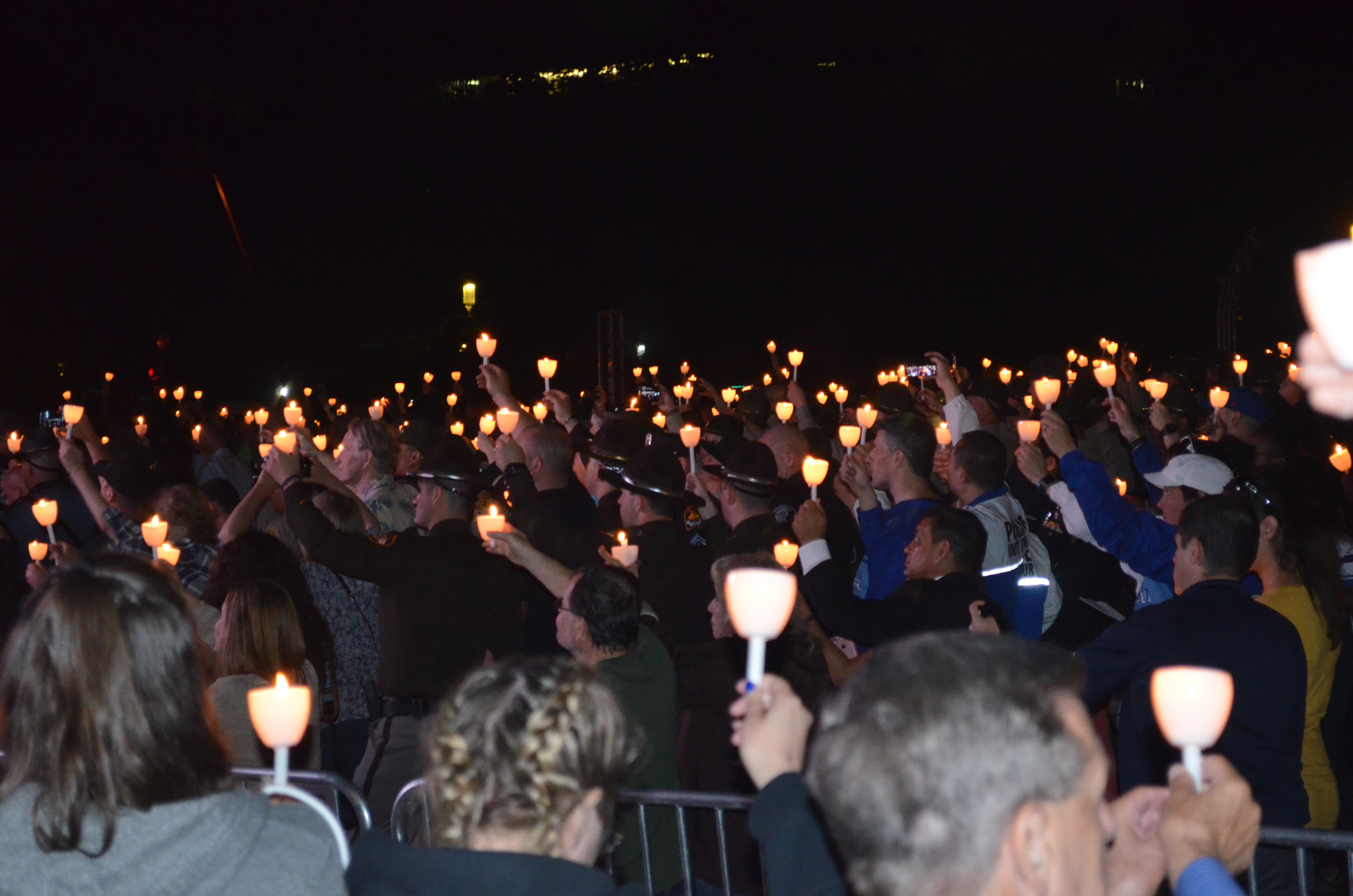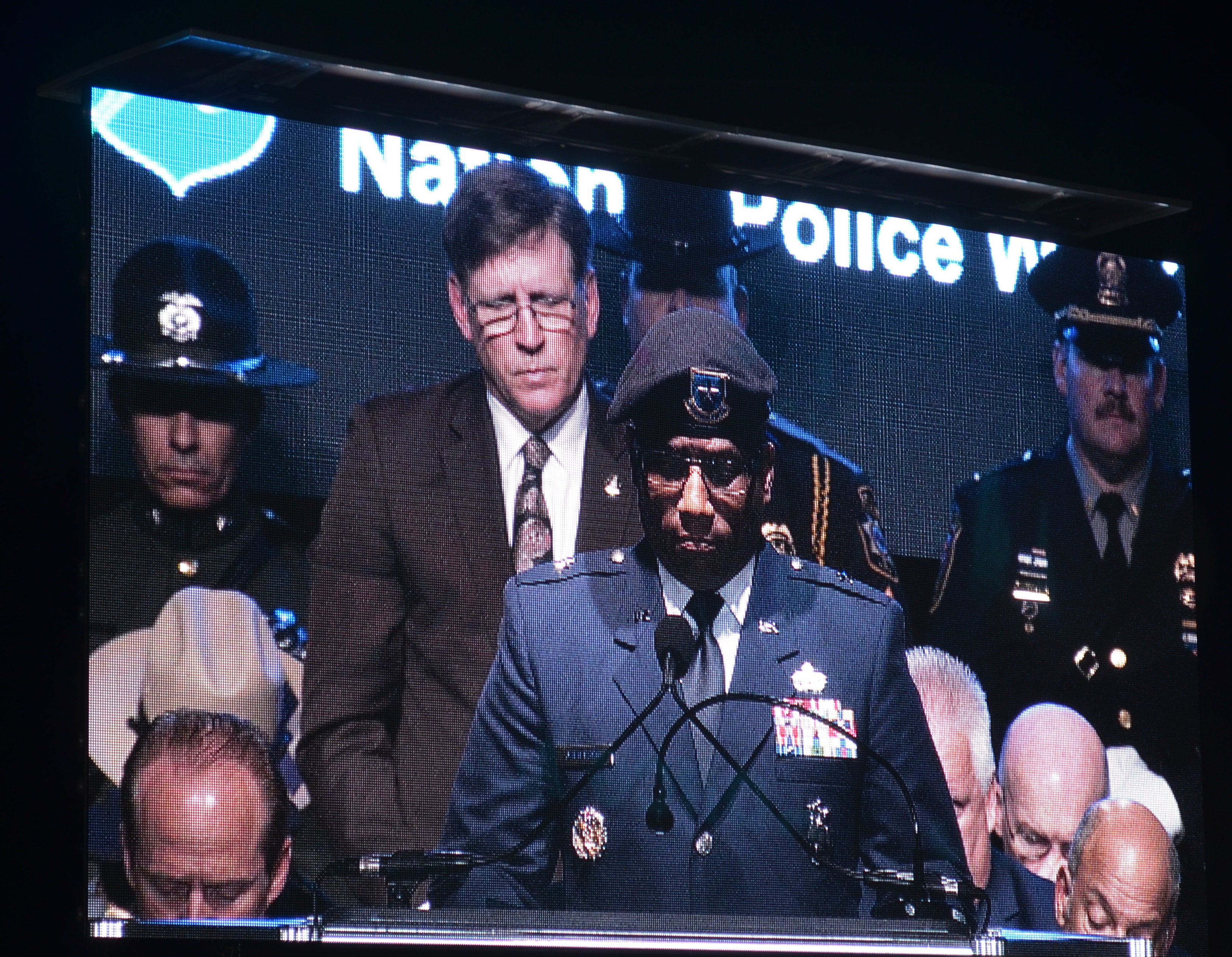
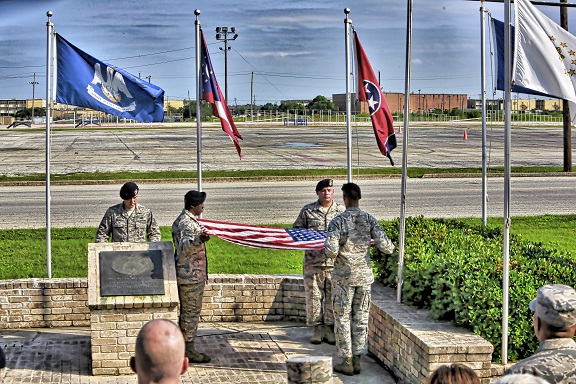
2016 Police Week closing ceremony, formal retreat, was conducted in front of the USAF Security Forces Museum, Friday 20 May 2016. The 343 TRS (Security Forces Academy) was the host and all JBSA units were represented as were San Antonio Police Department, USMC, USN, foreign services as well as civilians. Attendance was 350.
(photos by Ken Neal)

Veteran’s pension is a cash benefit paid to war-time veterans who have limited or no income. Veterans 65 and older automatically qualify to receive this benefit. Those under 65 years of age must be permanently and totally disabled.
In addition to the cash benefit, veterans who are more seriously disabled may qualify for Aid and Attendance or Household Benefits, paid in addition to their basic pension rates. The most common use for this benefit package includes medical care for veterans in non-combat related injuries, such as a stroke or vehicle accident – leaving them permanently disabled. Benefits may also include compensation for an assisted living facility; a popular option for those who are no longer able to care for themselves.
Veterans and widows of veterans considering a transition to an assisted living facility may be eligible for the Aid and Attendance benefit package. The package, in addition to paying for the cost of the assisted living facility, may also pay a monthly stipend of $1,788 to $2,120 to help with living expenses.
A widow of a war-time veteran may also apply for the Widows Pension with Aid and Attendance benefit package, making them eligible to receive up to $1,149.00 a month. Again, income from any source must be offset by medical expenses, and liquid assets must be lower than $80,000. If one’s income is not totally offset, the benefit package may be pro-rated.
Other medical expenses may also qualify, including medications, in-home support, co-pays and too many others to mention here. Our advice to you is that if you feel you or your family may be eligible for this or any other veterans benefit package, contact our office and ask to speak with one of our knowledgeable staff. Our goal is to help you find the facilities and benefit packages that best meet your needs.
In addition to the resources my office provides, we work closely with the Helping Hands Senior Resource Center in Vacaville. Together we have successfully matched hundreds of veterans with the benefit packages they need, including the Aid and Attendance and Household Benefit programs. Their office can be reached at (707) 451-8742. Ask for Melanie Richardson.
From: Solano Veterans Scene – May 2016
Ted Puntillo is Director of Veteran’s Services for Solano County. Reach him at (707) 784-6590 or This email address is being protected from spambots. You need JavaScript enabled to view it.. The Solano County Veteran’s Services Office, 675 Texas St. in Fairfield, is open from 9 a.m. to noon and 1 to 4 p.m. Monday through Friday.
37th Training Wing Welcomes New Wing Commander (SF)
By 502nd Air Base Wing Public Affairs, May 20, 2016
JOINT BASE SAN ANTONIO-LACKLAND --
Members of the 37th Training Wing welcomed a new wing commander May 20 during a change of command ceremony at the Gateway Club at Joint Base San Antonio-Lackland.
Maj Gen Mark Brown, 2nd Air Force commander, was the presiding official for the ceremony, where Brig Gen Trent H. Edwards, former 37th TRW commander, relinquished command of the wing to Col Roy Collins. Collins is the former 5th Bomb Wing Mission Support Group commander from Minot Air Force Base, N.D.
The 37th Training Wing is the Air Force's largest training wing, encompassing 22 locations worldwide including the Department of Defense's Military Working Dog Training Academy, the Inter-American Air Forces Academy and Air Force Basic Military Training, which educates, trains and transitions more than 38,000 civilians into Airmen annually.

Col Roy Collins, incoming 37th Training Wing commander, addresses the audience during the 37th TRW change of command ceremony May 20, 2016, at the Gateway Club at Joint Base San Antonio-Lackland, Texas. Collins comes to JBSA-Lackland from Minot Air Force Base, N.D., where he was the 5th Bomb Wing Mission Support Group commander. (Photo by Johnny Saldivar)
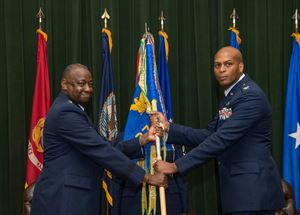
Maj Gen Mark Brown, 2nd Air Force commander, passes the guidon to Col. Roy Collins, incoming 37th Training Wing commander, during the 37th TRW change of command ceremony May 20, 2016, at the Gateway Club at Joint Base San Antonio-Lackland, Texas. Collins comes to JBSA-Lackland from Minot Air Force Base, N.D., where he was the 5th Bomb Wing Mission Support Group commander. (Photo by Johnny Saldivar)
Added AFSFA Note: Col Roy Collins is a career SF officer and a graduated SF commander.
‘Sky Cops’ Protect Bases, Bombers, Missile Fields, And Take On New Roles
American Shooting Journal, 14 May 2016
Guardians of the Air Force Part II of II
STORY BY TROY TAYSOM
Editor’s note: Part I in this series last issue covered the U.S. Air Force’s Office of Special Investigations.
The United States Air Force is a unique service for a multitude of reasons. It was the first branch of the service to allow women into combat roles (security police) and has an entire career field dedicated to protecting air bases, aircraft, Air Force personnel and nuclear weapons. All of the other services require individual units to provide security for themselves, i.e. an Army aviation unit’s members, including her mechanics, are armed and trained as riflemen. In the Air Force, only one group is trained in the art of Air Base Ground Defense (ABGD).
Chuck Norris started his martial arts training when he was an air policeman in Korea. Besides Norris, the “Sky Cops” have a storied past full of unsung heroes, hard-fought battles and the distinction that not a single air base was ever overrun during the Vietnam War – and not for lack of trying on the North Vietnamese’s part either. It has taken nearly 70 years for this career field to gain its true identity. Here is that story.
POST WORLD WAR II
In 1947 when the Air Force was officially separated from the Army, the need to protect not only the aircraft but now a cache of nuclear weapons became paramount. The old-time bomber pilot and commander Curtis LeMay saw the need for a unit to function like the infantry, but on Air Force bases. These airmen needed to be versed in the use of small arms, crew-served weapons, and squad- (fire team in the Air Force), platoon- (called a flight) and company- (called a squadron) level tactics. These units needed to be highly specialized in the deterrence and detection of unauthorized people or groups attempting to access a base (especially ones with nuclear missions) or missile field. The Strategic Air Command led the way in developing their APs into highly trained soldier airmen, known unofficially as “SAC Trained Killers.”
During the Korean War, very few air bases came under attack. The APs were basically law enforcement on the base and guarded aircraft. No tactical plans had been implemented, let alone training for a base attack. The Air Force was lucky, but their luck would be tested mightily in the next go-around. The SAC model wasn’t followed by units in Korea, as the nuclear weapons were kept stateside.
VIETNAM
As the Vietnam War ramped up in the 1960s, so did the need for the Air Force’s presence in and around America’s ally in Southeast Asia. The U.S. focused most of its air bases in South Vietnam and Thailand, with others further away in places like Guam and the Philippines. Those bases located on the mainland endured the greatest risk of attack, as they sat close to enemy forces. Amazingly enough, few of the Air Force bases came under attack in the beginning years of the war. The tactics and mindset were still very Korean War-oriented. Many APs arrived at bases in Southeast Asia to find no weapons had been sent for them to use. Other bases had WWII leftovers – Browning Automatic Rifles (BARs), .30-caliber Browning machineguns, grease guns, Colt .45 ACP 1911s and M1 Carbines.
I spoke with Senior Master Sergeant Pete Piazza (retired) at length about what the Sky Cops (as they were lovingly dubbed) endured from 1966-72. Piazza served three tours of duty in Vietnam as an AP and then as a SP. He witnessed firsthand the Air Force go from no real idea of how to defend a base to being awarded the Silver Star for his actions at Bien Hoa Air Base on Jan. 31, 1968, during the Tet Offensive.
Piazza took charge of his bunker when his leader, Capt. Maisey, was killed by a rocket. A staff sergeant at the time, he spent the next eight hours running through heavy machinegun fire, rockets and sniper fire to keep his men fully supplied with much-needed ammunition and water. Piazza was quick to educate me on a couple of little known facts.
“Ninety percent of the SPs that were at Air Force bases when Tet started had never seen combat,” he told me.

Air police, security police, security forces – the protectors of our country’s air bases and overseas assets have had several names, but the job they’ve done has never wavered. (TROY TAYSOM)
He also said something that intrigued me: “The Air Force was the only branch of the service that didn’t have one of their bases overrun by the enemy.”
Why was that? Men just like Piazza. But ask him and he’ll say, “I was just doing what everybody else was doing.” While humility is the true sign of a hero, I will have to disagree with Pete on this one. Silver Stars aren’t just handed out, especially to enlisted USAF airmen.
Undoubtedly, there were others who performed as bravely as Piazza did on that January day so long ago. I can’t possibly find and speak to them all; some, including his direct supervisor, Capt. Maisey, were killed on that day and in the days to come as Tet raged on. Piazza certainly wasn’t part of any “chair force.” He was every bit an infantryman that day as Audie Murphy and Chesty Puller.
Ask any soldier and he or she will tell you: Whoever owns the night has the advantage. The SPs were some of the first units in the Vietnam War to receive ANTVS-2 scopes, nicknamed “Starlight” because of their use of ambient star and moon light. These scopes were some of the first real attempts at night vision and changed the face of war forever. The riflemounted scope gave the user night vision out to 400 meters, while a crew-served weapons version, the ANPVS-4, worked out to 1,000, and an off-weapon version, the ANPVS-5, allowed sight out to 1,500 meters. For those airmen who had them, night shifts became a little less nerve racking.
One asset was in great supply, and gave the SPs another advantage at night – military working dogs, MWDs or K9s. The Sky Cops would walk the perimeter at night with their dogs. The SPs couldn’t see any better just because they had a dog, but the dogs could sense the presence of intruders, and on more than one occasion they stopped enemy sappers before they had the chance to breach the perimeter fence. For whatever reason, the Viet Cong also had a healthy fear of these K9s and kept their distance as word spread of their presence on the air bases. At the height of the K9 program, in January 1967, there were 476 dogs deployed. The dog handlers carried a special version of the M16, called the GAU-5/A. It was shorter and allowed the handler to control the dog and fire the rifle one-handed if needed.
It wasn’t until after Tet that the Air Force wrote its first definitive, battle-tested, air-base ground defense manual to be used in the years ahead – especially during the Cold War.
THE MAYAGUEZ INCIDENT
On May 12, 1975, Cambodian naval ships captured the S.S. Mayaguez, a U.S. merchant marine ship, in international waters. Negotiations broke down and a rescue mission was planned. The closest unit with combat experience was the 56th Security Police Squadron stationed at Nakhon Phanom Royal Thai Air Force Base in Thailand. After the CH-53 Knife helicopters plus some HH-53 choppers left the base, Knife 13 disappeared from radar 40 miles out. It is widely thought that mechanical issues caused the crash. All 18 security policemen and four crew members and a linguist died.
Moments before take-off, a picture of the ill-fated Sky Cops in Knife 13 was taken. Thirty minutes later all 23 passengers were dead. The image leaves a haunting legacy of sacrifice and how short life can be in a combat zone.
COLD WAR
As the Cold War heated up, America’s nuclear arsenal followed suit. Most nuclear assets came under the purview of the USAF, and more specifically SAC. SAC was the brain child of LeMay and was arguably the best run major command in the Air Force. SAC operated bases for bombers capable of delivering nuclear weapons, as well as bases that supported missile field operations. These wings were subject to remarkably stringent inspections, the failure of which would result in the firing of the senior staff of the wing.

The USAF was the first branch of the military to deploy female snipers and has since trained multiple women in this role. (USAF)
The SPs were responsible for several missions on SAC bases: the protection of the weapons storage areas, where the nukes were stored; and the physical guarding of the B-52s and KC-135s, air refuelers, that were on “alert.” Being on alert required the aircrews to live in a special facility next to the aircraft. At the sound of the klaxon, the crews rushed to their aircraft and were ready for take-off to top secret destinations. The SPs guarded all of these locations, day and night, 24/7/365. At places like Minot Air Force Base in North Dakota, guard duty tested one’s desire to be a cop.
Missile fields also demanded the attention of the SPs. These fields were vast and remote. Cops worked seven days straight, often living out of campers attached to the back of pick-up trucks. The missile fields weren’t located in tropical locales either. They were spread across states like Montana, Kansas, Wyoming and South Dakota. Working conditions for the cops were less than ideal; in fact, at times the conditions resembled the Arctic Circle more than the continental United States. But defend these locations the SPs did, and to this day, still do. In 1997 security police career fields of law enforcement and security specialist were merged into one field and renamed Security Forces. This change gave the cops more flexibility in manning assignments, as well as providing cross training.
MODERN-DAY WAR ON TERROR
The USAF’s modern-day Security Forces function even more like infantry units than the cops in the past. They have all the weapons of the infantry – the M240, M249B, M4, M9, M203, 81mm mortars and M24 sniper systems. They are the first service to deploy female snipers and have now trained multiple women in this role.
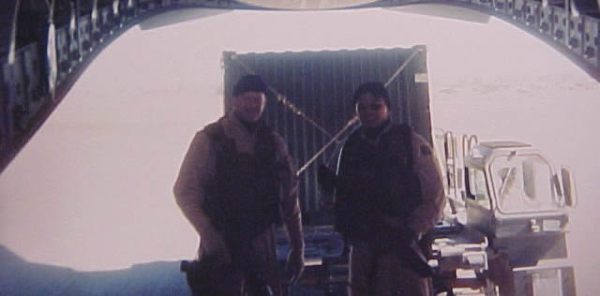
Couple of Ravens in back of C-17 Aircraft – Photo by J Hines
The Air Force’s cops continue to become a “high speed, low drag” group. They have a squadron that is airborne qualified, stationed in Georgia. This group of cops even made a combat jump with the Army into Iraq. Air Mobility Command has also developed a group called the Ravens. In this group of Security Forces, airmen accompany aircraft into dangerous regions of the world where there is no on ground security for the aircraft. These men and women travel the world providing security for these USAF assets and serve as Force Protection advisors to aircrew members. Other major commands have similar.

In addition to guarding U.S. Air Force missile fields, “Sky Cops” also protect the nation’s bomber fleet. Here, Airman 1st Class Arlando Budd, assigned to the 509th Security Forces Squadron, provides security near a B-2 Spirit at Whiteman Air Force Base, Mo. (SENIOR AIRMAN NICK WILSON, USAF)
The Air Force continues to change with the times. It just so happens that the “Sky Cops” are leading the way when it comes to installation, asset, nuclear and personnel security. The lessons learned in the Jungles of Vietnam and Thailand, as well as the lessons of the Cold War in Europe and the frozen missile fields and bomber facilities of America are the foundation under which the new generation of Sky Cops continue to grow and evolve. ASJ
Article republished with permission of ASJ. Visit the ASJ web site and original article here: http://americanshootingjournal.com/guardians-air-force-part-ii-ii/

Last night the National Mall in Washington D.C. was a sea of candles held by thousands of law enforcement officers, their families and friends to pay tribute to officers who lost their lives in the line of duty.
The candlelight vigil, a powerful and moving ceremony, is part of National Police Week and during the ceremony 252 fallen officers names were read aloud. Their names have been added to National Law Enforcement Officers Memorial.

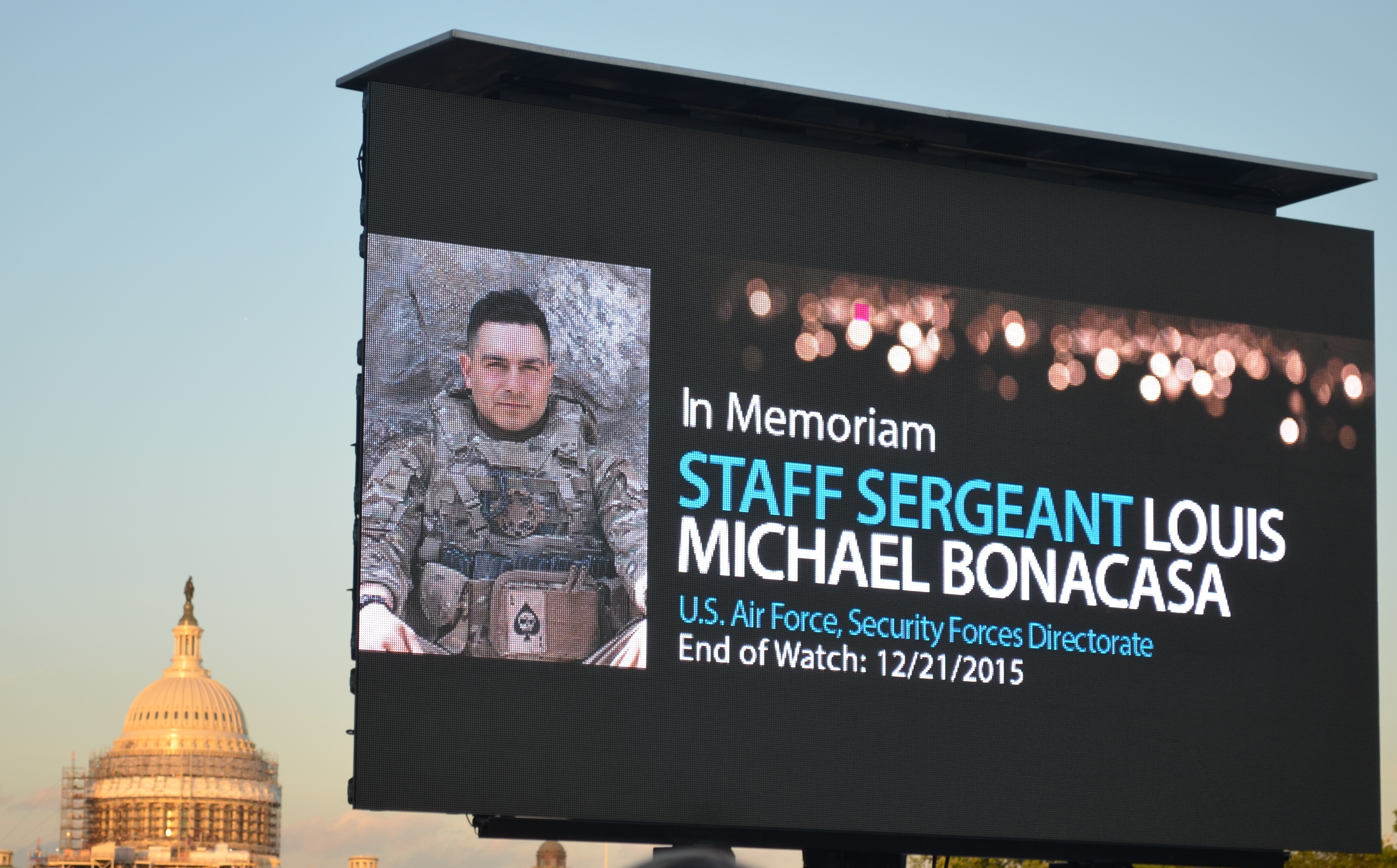
Of those honored last night were 123 officers who were killed in 2015 two of which were United States Air Force Security Forces members. Brig Gen Allen J. Jamerson stepped to the microphone on the stage to read the names ... TSgt Joesph G. Lemm and SSgt Louis M. Bonacasa.
Another 129 officers who died in previous years but had not previously been recognized were also added to the memorial this year.
Attorney General Loretta Lynch; Department of Homeland Security Secretary Jeh Johnson; president of Concerns of Police Survivors, Brenda Donner; and President of the National Law Enforcement Officers Memorial Fund, Craig Floyd were guest speakers who both opened and closed the ceremony.
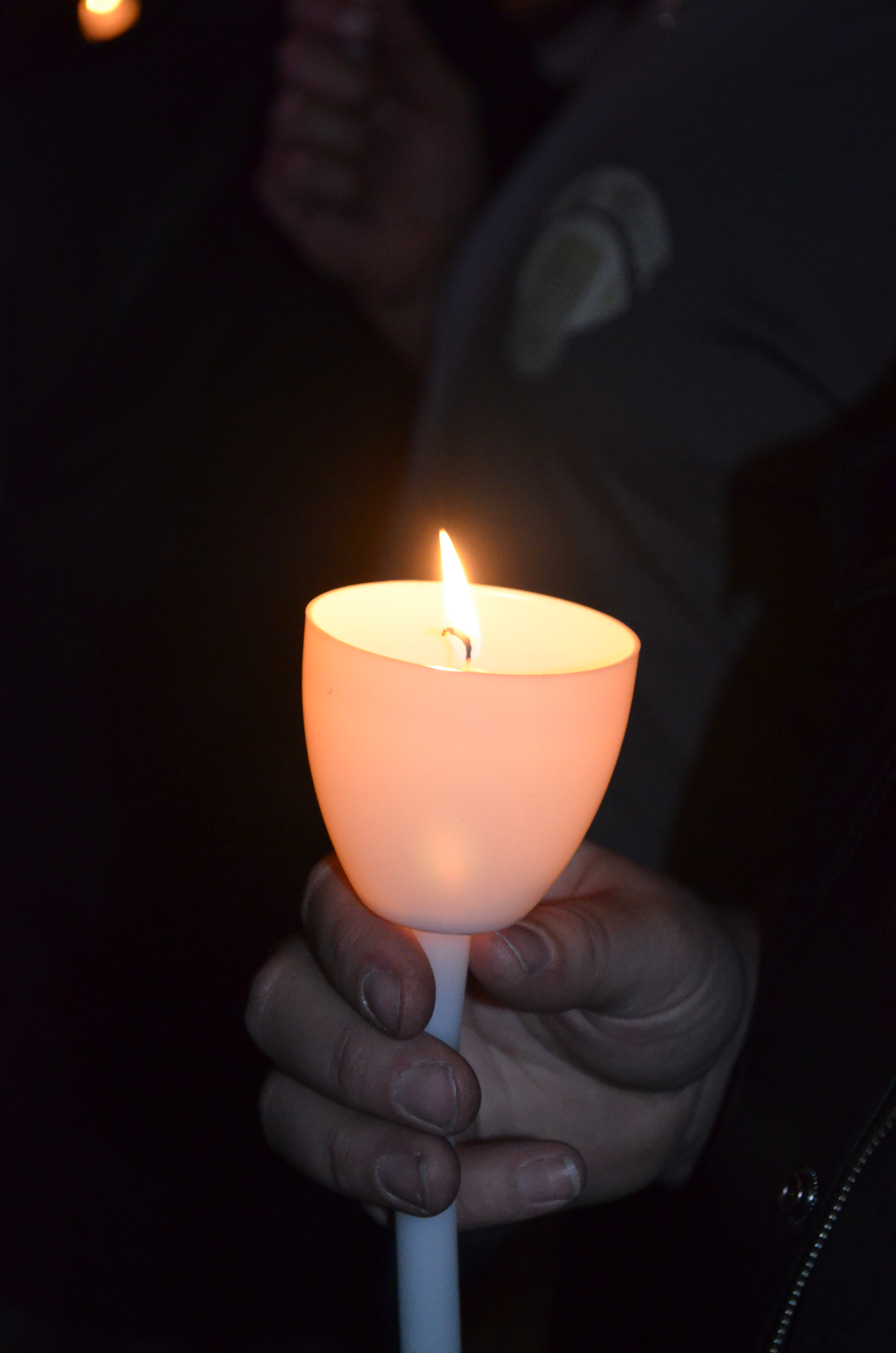
God Bless our Defenders and their families forever.
Page 47 of 50
